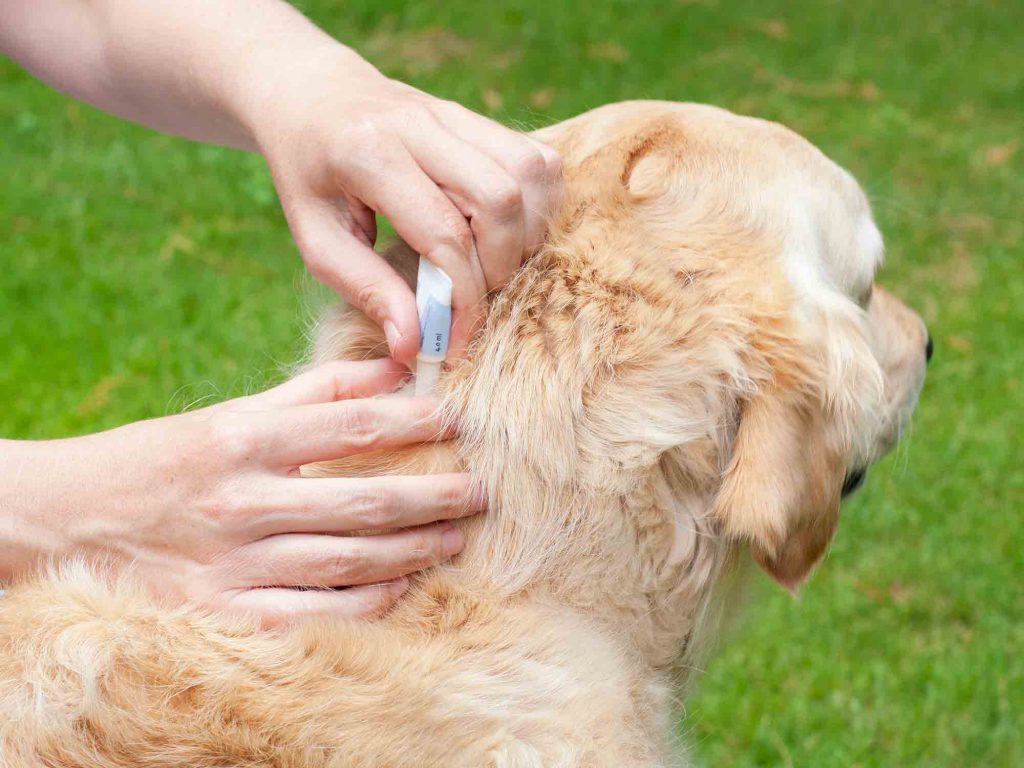
A Pet Owner’s Guide to Lyme Disease in Pets
 With spring (finally) here and summer on the way, our thoughts naturally turn to how we can protect our pets from the dangers associated with warm weather. Making sure they’re hydrated, watching out for heatstroke, and being alert to poisoning risks are all important safety measures, but it’s important to remember that ticks also pose a significant danger to your pets.
With spring (finally) here and summer on the way, our thoughts naturally turn to how we can protect our pets from the dangers associated with warm weather. Making sure they’re hydrated, watching out for heatstroke, and being alert to poisoning risks are all important safety measures, but it’s important to remember that ticks also pose a significant danger to your pets.
Lyme disease is one of the most common tick-borne illnesses that affect pets, and its effects can be devastating. Preventing and detecting Lyme disease in pets is a crucial aspect of summer safety in Virginia.
Lyme Disease in Pets
Lyme disease is caused by a spiral-shaped bacterium, Borrelia burgdorferi, and is carried and transmitted to people and pets primarily by the black-legged deer tick. Lyme disease can be transmitted to people, pets, horses, and cattle, and is the second most prevalent communicable disease in Virginia.
Diagnosis and Treatment
The most common clinical signs of Lyme disease in pets is sudden lameness, pain, and swelling of the joints associated with arthritis. Other signs may include fever, loss of appetite, swollen lymph nodes, and lethargy. A blood test, along with clinical signs and exposure risks, can determine whether or not your pet has contracted Lyme disease.
Lyme disease is treated with antibiotics, and most pets experience a rapid improvement once they are treated. Following your veterinarian’s advice regarding dosage and follow-up care will help your pet to make a full recovery.
What You Can Do
Preventing your pet from coming into contact with Lyme disease-carrying ticks is the best way to protect them from contracting the disease in the following ways:
- Make sure your pet is on a flea and tick preventive medication at all times. Although your pet’s exposure to ticks reaches its peak during the months of April-November, to be truly effective, they need to be protected year-round.
- Talk with your veterinarian about whether or not your pet is a good candidate for the Lyme disease vaccine.
- Avoid areas where ticks are likely to be lurking, such as wooded or grassy areas. Keep your dog on the trail at all times and avoid walking in heavy brush or wooded areas.
- Check your dog, and yourself, thoroughly for ticks after being outdoors. If you find a tick, remove it promptly by grasping the part closest to the skin with tweezers and pulling it out slowly, without twisting or squeezing. Dab the wound with rubbing alcohol to disinfect.
- Make the environment outside your home less hospitable to ticks by trimming or removing bushes and landscaping next to your home, and keeping your grass trimmed.
If you haven’t started your pet on a year-round flea and tick prevention protocol yet, or need a refill, don’t hesitate to contact your partners in pet care at Arlington Animal Hospital. We are also here to answer any questions about Lyme disease in pets.
Contact Us!
2301 Columbia Pike #G-1, Arlington, VA 22204
Phone: (703) 920-5300
Fax: (703) 685-8860
Email: info@myarlingtonvet.com
Office Hours
-
Monday
8 a.m. – 8 p.m.
-
Tuesday
8 a.m. – 8 p.m.
-
Wednesday
8 a.m. – 6 p.m.
-
Thursday
8 a.m. – 6 p.m.
-
Friday
8 a.m. – 6 p.m.
-
Saturday
8 a.m. – 2 p.m.
-
Sunday
CLOSED
- Doctors’ hours are by appointment only.



